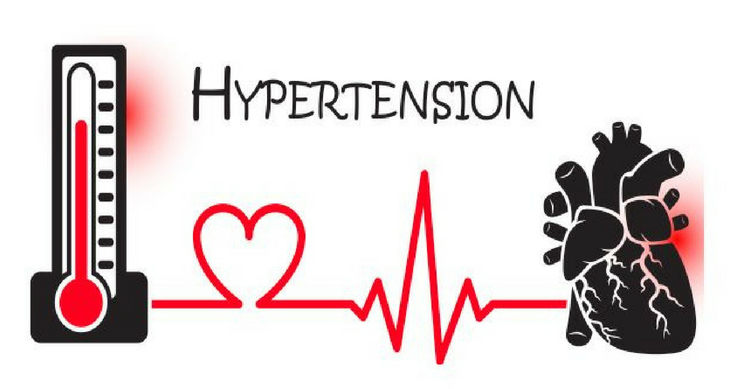
As adults reach the later stages of life, they often do so with extra weight that puts them at higher risk for chronic diseases, such as diabetes, cardiovascular disease and cancer.
That’s also the time when appetite declines. However, it also seems to be harder than before to lose excess weight.
What’s going on?
“As people age, they need fewer calories to maintain the same weight,” said Dr. Sarah Booth, director and senior scientist at the Jean Mayer USDA Human Nutrition Research Center on Aging at Tufts University in Boston.
Booth said many changes occur as people age, affecting how the body digests and uses the food they eat, along with what people should do to stay healthy.
For example, muscle mass and strength — which begin to slowly decline as people approach age 40 — decline more rapidly beginning in their 60s, she said. Muscle loss contributes to the slower rate at which the body uses calories. Physical activity levels also generally decline as people age. Bones begin to thin. And people may become less mobile and more sedentary.
Recognizing these changes, the Dietary Guidelines for Americans contains a separate section for older adults with recommendations on how they can meet their changing nutritional needs.
What is an “older” adult, and when do nutritional needs change?
Different federal agencies define “older adults” differently, said Gretchen Dueñas-Tanbonliong, associate director of health and wellness at the National Council on Aging. Federal dietary guidelines from the departments of Agriculture, or USDA, and Health and Human Services define older adults as those who are 60 years or older. The National Institute on Aging and the Centers for Disease Control and Prevention generally define older age as 65 years or older.
“There is no consensus among agencies,” Dueñas-Tanbonliong said. Plus, there is a difference between chronological age and biological age, which refers to the degree to which cellular health declines as people age. Some people age faster than others, she said, and that affects their dietary needs, too.
“Older adults are a diverse group,” she added. “There is no one-size-fits-all recommendation when it comes to dietary needs.”
There are some guidelines, however.
According to current federal dietary guidelines, women age 60 and older require between 1,600 and 2,200 calories a day. Men in this same age group require 2,000 to 2,600 calories a day. By comparison, women in their 30s need at least 1,800 calories daily, and men in that same age group require at least 2,400.
Those calories should come from nutrient-dense foods, with an emphasis on vegetables, fruits, whole grains, lean meats and low-fat dairy, prepared with minimal added sugars, refined starches, and saturated fat and sodium, according to these guidelines. These recommendations are updated every five years, and the new version is expected to be released in late 2025.
What does “nutrient-dense” foods mean?
“For older adults, that means choosing foods that are high in protein, vitamins or minerals and not high in calories because our energy needs decline with age,” Booth said. “It also means limiting those high-calorie foods that also don’t contain critical nutrients.”
Because the body may not absorb nutrients as efficiently as it ages, it’s important to match the calories you consume with what your body needs to thrive, said Dueñas-Tanbonliong, a registered dietitian/nutritionist. “If there’s one vital nutrition tip for older adults, it’s to make every calorie count.”
Protein
As muscle mass declines with age, the need for protein becomes especially important, she said. But studies show that older adults don’t get enough, especially those age 71 and older. Guidelines recommend that older adults consume 5 ounces to 6.5 ounces of protein daily, but the average person in this age group consumes about 4.5 ounces. There is about 1 ounce of protein in a single egg, a tablespoon of peanut butter, 1/4 cup of cooked beans and in every ounce of meat, poultry or fish.
Vitamins D and B12
Vitamin D plays an important role in bone health, and vitamin B12 is needed to keep the central nervous system functioning properly. Older adults don’t get enough of either and may need to take supplements to compensate.
Hydration
Compared with younger adults, people age 60 and older consume substantially smaller amounts of beverages and often do not stay well hydrated, according to dietary guidelines. One reason is that the ability to detect thirst decreases as a person ages. Another might be that people resist drinking fluids because they have difficulty controlling their bladder.
Easier said than done
A USDA analysis of federal health data released in 2020 found that less than half of U.S. adults aged 71 and older met federal guidelines for healthy eating patterns, although men in this age group did a better job of meeting protein and dairy requirements than women. Overall, less than a quarter of older adults met requirements for vegetables, fruits and dairy.
The ability to meet dietary requirements varied by income and across racial and ethnic groups, the analysis found. Less than 10% of low-income older adults met vegetable recommendations, and less than 30% met protein recommendations.
Hispanic/Latino older adults met fruit and grain recommendations better, compared with their non-Hispanic white and Black counterparts. Half of older Hispanics were getting enough grains, and one-third were getting the recommended amount of fruit. In contrast, only a third of non-Hispanic white adults and Black people got the recommended amount of grains, and a sixth of those groups got enough fruits. Fruits and grains contain plenty of fiber — which can help protect against heart disease and diabetes, and help lower cholesterol and promote weight loss — but most adults in the United States don’t get enough of them, according to dietary guidelines.
The incidence of food insecurity — defined as limited or uncertain access to an adequate amount of food — has increased among older adults over the past 20 years to reach 9.3% of U.S. households that include an adult age 65 or older in 2023, according to USDA data. And diet quality in this age group has declined, according to a 2022 study in the medical journal JAMA Network Open.
Dueñas-Tanbonliong said choosing foods from the Mediterranean-style eating pattern — which focuses on lean meats and fish, healthy fats from olive oil, whole grains, beans and legumes, low-fat dairy and plenty of fruits and vegetables — provides all the vitamins and nutrients people need, no matter their age.
Another diet known as DASH, which stands for Dietary Approaches to Stop Hypertension, was the best at promoting heart health, according to a 2023 scientific statement from the American Heart Association. This diet emphasizes non-starchy vegetables, fruits, whole grains and legumes, and is low in salt, added sugars, tropical oil and processed foods.
“It’s never too late to improve our diet,” Dueñas-Tanbonliong said.


